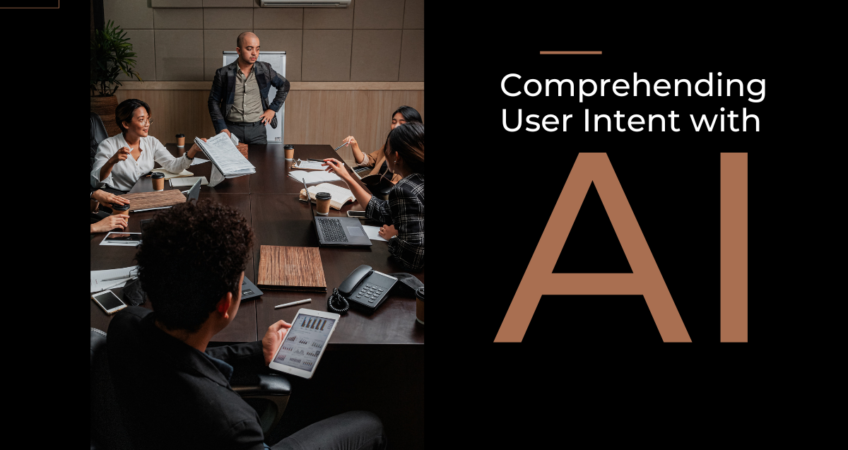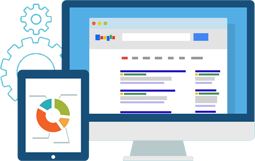
Comprehending User Intent with AI
Understanding user intent is superbly crucial for effective Los Angeles search engine optimization (SEO) and overall digital marketing strategies. AI technologies have revolutionized the ability to interpret and respond to user intent precisely. Here’s how AI helps in understanding user intent better and enhancing your marketing efforts:
Natural Language Processing (NLP)
Natural Language Processing (NLP) is a subset of AI focusing on interactions between computers and human language. NLP enables AI to understand, figure out, and respond to human language in a meaningful and contextually relevant way.
-
Contextual Understanding
NLP algorithms analyze the context in which keywords are used, distinguishing between meanings of the same word based on surrounding text. This helps identify the true intent behind search queries.
-
Sentiment Analysis
NLP can gauge the sentiment of user content (positive, negative, neutral), providing insights into user emotions and intentions. For example, a query like “best affordable smartphones” indicates a transactional intent with a focus on cost-effectiveness.
Machine Learning Algorithms
Machine learning algorithms learn from huge and vast amounts of data to identify and pick out patterns and predict outcomes. These algorithms can provide deeper insights into user behavior and preferences when applied to user intent analysis.
-
Pattern Recognition
To infer intent, machine learning models can analyze user behavior patterns, such as search history, click-through rates, and dwell times. For example, a user who frequently searches for “best hiking trails” and “hiking gear reviews” likely has an informational and transactional intent related to hiking.
-
Predictive Analytics
These algorithms can predict future user behavior based on historical data. For instance, if a user often searches for product reviews before purchasing, AI can anticipate this need and suggest relevant content preemptively.
Behavioral Analysis
AI tools can track and analyze user behavior on websites and search engines to understand intent more accurately.
-
Clickstream Data Analysis
AI examines the sequence of page user visits (clickstream data) to determine their path and intent. For example, users navigating from general categories to specific product pages likely have a strong purchase intent.
-
Session Analysis
By analyzing the duration and interaction within a session, AI can infer whether a user intends to gather information, compare options, or make a purchase.
Voice Search Optimization
With the rise of voice-activated searches, understanding spoken language has become essential. AI technologies are particularly adept at processing and understanding voice queries.
-
Conversational AI
Voice searches tend to be more conversational and complex. AI-powered tools use conversational AI to decode these queries, understanding the intent behind natural, spoken language.
-
Question-Based Queries
Voice searches often include questions. AI can identify and categorize these queries, providing answers directly addressing the user’s intent. For example, a query like “What’s the weather like today?” clearly shows informational intent.
Content Personalization
AI enables the creation of personalized content that aligns closely with user intent, improving engagement and conversion rates.
-
Dynamic Content Delivery
AI can adjust the content shown to users in real time based on their past behavior and preferences. AI can prioritize related content in future interactions if a user has previously shown interest in a particular topic.
-
Personalized Recommendations
AI-driven recommendation engines analyze user data to suggest products, services, or content that match their inferred intent. For example, e-commerce platforms use AI to recommend products based on previous purchases and browsing behavior.
Enhanced Search Engine Algorithms
Search engines like Google and Bing utilize AI to enhance their algorithms, aiming to deliver results that best match user intent.
-
RankBrain
Google’s AI algorithm, RankBrain, helps process search results and provide more relevant answers by interpreting the intent behind queries, even those it hasn’t encountered before.
-
BERT
The Bidirectional Encoder Representations from Transformers (BERT) algorithm helps Google comprehend the context of words in search queries, enabling it to deliver results that more accurately reflect user intent.
Conclusion
AI significantly enhances understanding of user intent by leveraging technologies like NLP, machine learning, behavioral analysis, and advanced search algorithms. By accurately interpreting user intent, businesses can create more relevant content, improve user experience, and achieve higher engagement and conversion rates. Embracing AI to understand user intent is a technological upgrade and a strategic advantage in today’s digital landscape.

